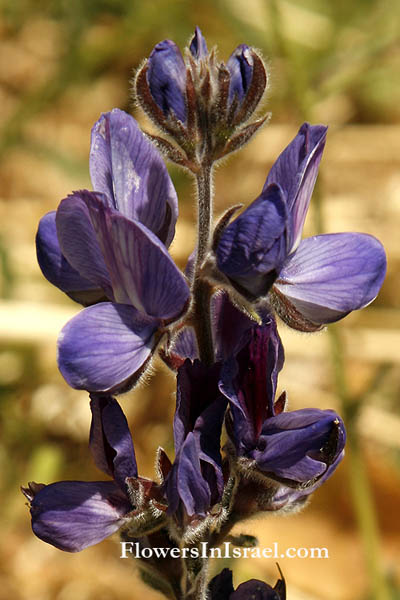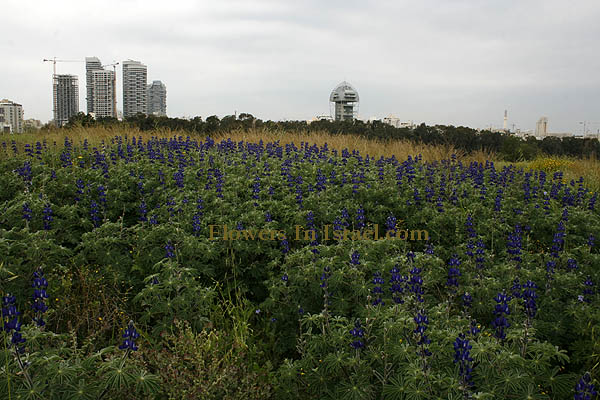Hebrew: תורמוס ההרים, Arabic: ترمس برّي
| Scientific name: | Lupinus pilosus L. | |
| Synonym name: | Lupinus varius L. | |
| Common name: | Blue Lupine | |
| Hebrew name: | תורמוס ההרים | |
| Arabic name: | ترمس برّي | |
| Plant Family: | Papilionaceae, פרפרניים |

|
| Life form: | Annual | |
| Stems: | 30-70 cm tall, branching from above, densely covered by long soft hairs | |
| Leaves: | Alternate, compound, digitate (shaped like a spread hand); leaflets oblong-obovate, mucronulate, sericeous to softly villous | |
| Inflorescence: | Raceme up to 10 cm, flowers irregularly verticillate | |
| Flowers: | Dark blue; peduncle 1-4 cm; corolla blue, the standard with a white or pale blue blotch | |
| Fruits / pods: | Legume covered in velvety down; 3-8 cm long; seeds 3-4, orbicular | |
| Flowering Period: | February, March, April, May | |
| Habitat: | Batha, Phrygana | |
| Distribution: | Mediterranean Woodlands and Shrublands | |
| Chorotype: | Mediterranean | |
| Summer shedding: | Ephemeral |

Derivation of the botanical name: Lupinus, Latin lupus, "wolf," alluding to the belief that these plants destroyed the fertility of the soil, which is the oppposite of the truth; the seeds are eaten in eastern Mediterranean countries. pilosus, hairy, shaggy; covered with long soft hairs. varius, having variegated, mottled, various colors; varying. The Hebrew name: תורמוס, turmos, from Greek: thermos (= Lupinus albus), which is probably identical with thermos (= warm, hot), which is related to therme (=heat).
The main stem was always shorter than the lateral branches in all populations. The longest main stem was observed in the Pilosus section (55-80 cm) and the shortest in the Atlanticus section (43-57 cm); L. palaestinus PI 491182 in the Pilosus section had the longest inflorescence (26 cm). The shortest was observed in L. pilosus PI 491182 (5.1 cm). The highest number of flowers (>50) and whorls (13) was observed in L. elegans and L. perennis; L. pilosus PI 491183/22 had the lowest number of the flowers (17) and whorls (4). 

Location:Napoleon Hill, Ramat Gan |